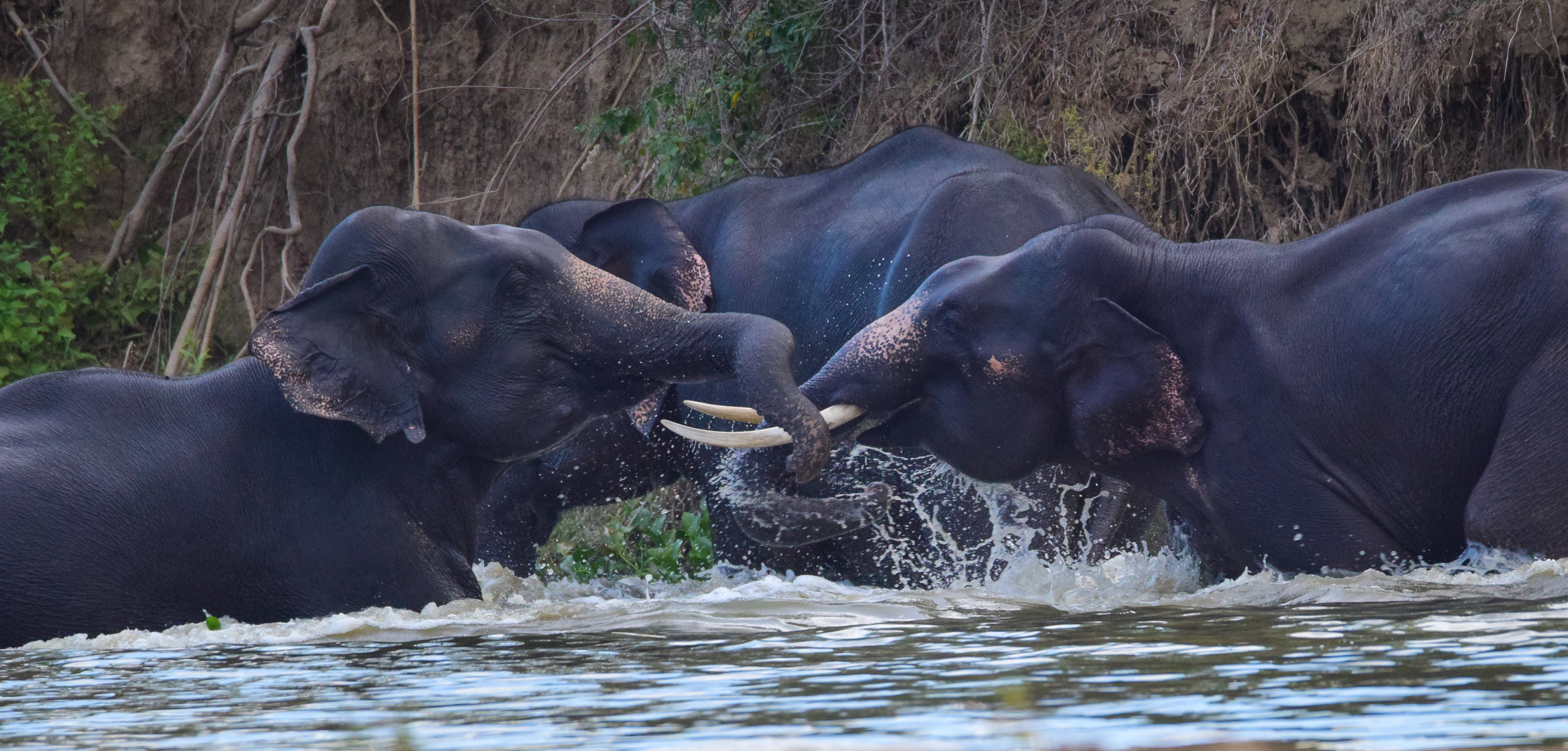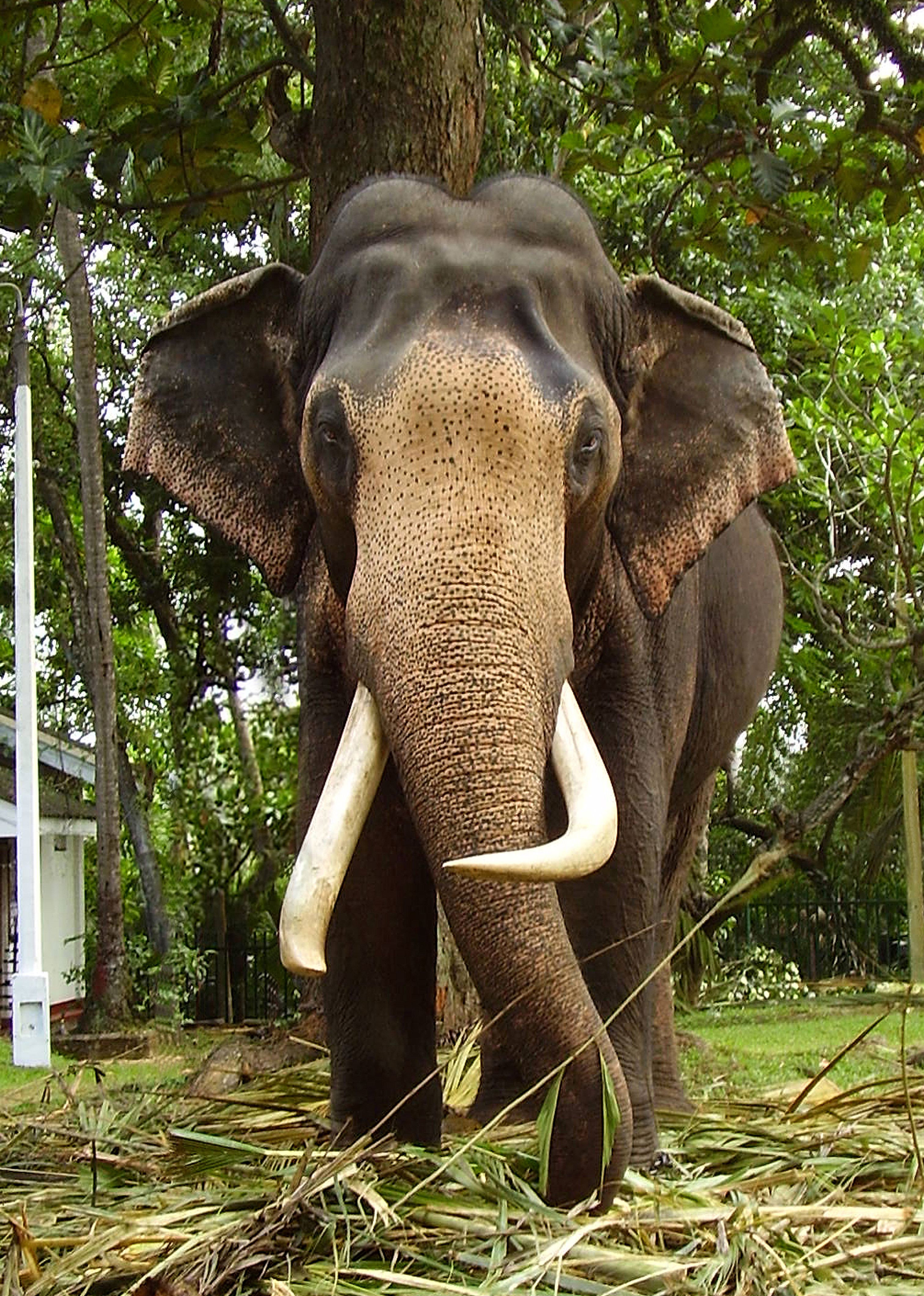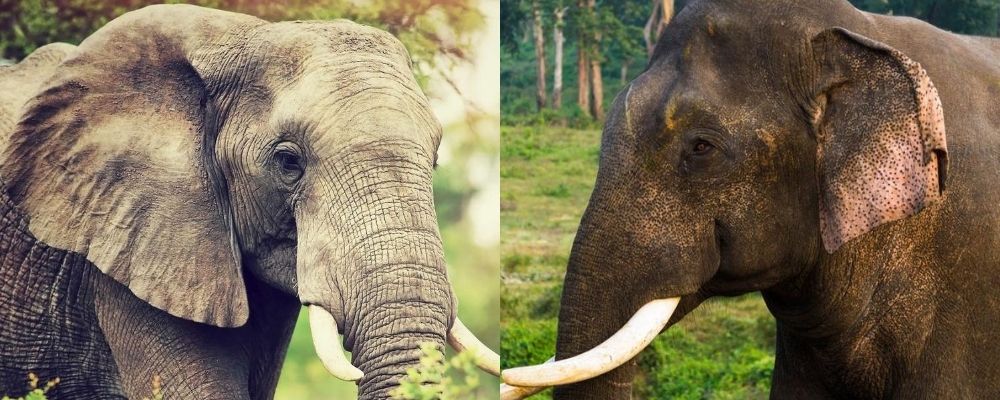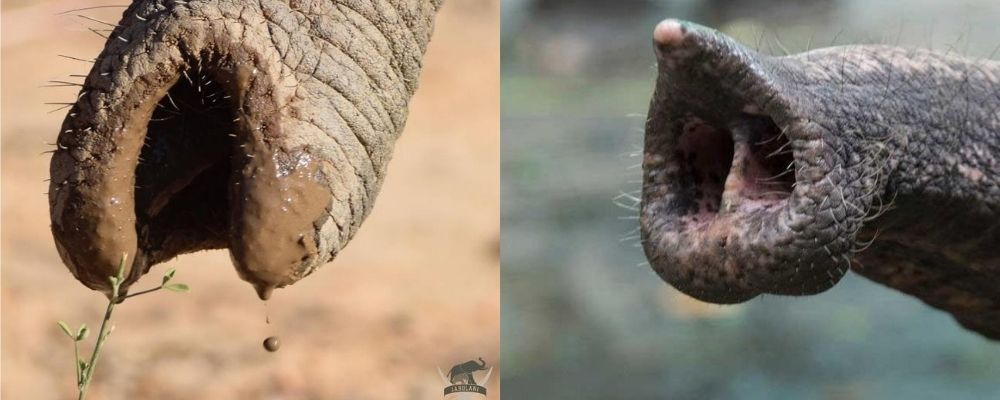Elephants of Brahmaputra
Today the demographic trendlines for Asian Elephants are very grim. By this century's end, the species seems likely to succumb to what paleontologists are calling the "sixth great extinction," the tsunami wave of species extinguished by the activities of humankind. Are there promising strategies of avoiding this outcome for the Asian Elephants - of saving the species? On a continent whose human population is in the billions and will certainly continue to grow, is it nonetheless possible to set aside sufficient forest ranges for Asian elephants to become a completely and sustainably wild species as they were millennia ago? Alternatively, are there favorable future roles for the elephants as work animals, roles that can still keep these amazing creatures happy and help them flourish again?
Intro
Ever since colonists first set foot on Brahmaputra their primary partners in settling the planet have been their majestic elephants. No other animal from Earth or native to Brahmaputra compares in strength, endurance, intelligence, or empathy. Standing 3.5 meters tall at the shoulder and weighing 5 tons, these elephants are capable of extraordinary feats of strength and yet are clever enough to independently devise solutions that never occurred to their human masters. They can work for days in weather and conditions that would wear down most industrial vehicles. But most importantly the elephants of Brahmaputra are a spiritual anchor, linking the settlers to their past and grounding them in the opportunities of the present.History of Elephant Taming
The earliest signs of elephant taming come from the Harappan civilization that existed on Earth in the Indus Valley dating back to roughly 2,000 - 3,000 BCE. By 1,000 BCE the practice had spread throughout the region as kings and princes caught and tamed wild elephants for use in their armies and temples. After Alexander the Great of Macedon invaded India in 327 BCE the practice of using elephants as heavy cavalry spread West. The Seleucid Empire, the Hellenic States, and the Carthaginian Empire all competed in an arms race to have the largest amount of military and working elephants on hand. However, in response to Hannibal Barca's invasion of Italy with 40 elephants in 218 BCE, the Romans developed tactics to envelop charging elephants and spear them from the side. This development of anti-elephant tactics, climate change in Northern Africa and Southwest Asia reducing elephant ranges, and the long time needed to raise and train a new generation of elephants ultimately saw the end of the Mediterranean elephant taming tradition by the end of the Roman period. From here on out, the practice would continue almost entirely in India and surrounding Asiatic regions. Over the centuries, as gunpowder weapons made destruction on a larger scale possible, elephants increasingly became laborers or symbols of status. By the 18th century the majority of elephants (almost entirely of the Asian variety) worked in the timber and transportation industries. Elephants in South Asia were used to clear forests for British Tea Plantations and to harvest the Teak wood so highly valued by the British shipbuilding industry. Over the course of the 20th through 24th centuries these elephants (and the clans that worked with them) saw action in WW2, the Vietnam War, the Kachin-Myanmar war, the Indonesian Rice Wars, and the wars of Bangladeshi Expansion. One of the largest problems facing colonists leaving the Sol System in the 27th century was how to survive without an already existing industrial and agricultural base. Increasingly, colonists looked back to permaculture and animal husbandry to solve the issue. While a modern all-terrain vehicle might be loaded with a million different conveniences, once broken down there was no guarantee that colonists would have the resources or tech base to repair it. Domesticated animals, however, could not only self replicate but multiply assuming a basic level of food, water, and safety. When the Brahmaputra Colony, Ltd began its voyage, among its cargo was 551 working elephants.Development of the Brahmaputran Elephant Breed
Keen to provide a solid foundation of genetic diversity and unsure what they would find in their new home, colonists brought with them elephants of every surviving species on Earth. Of the 551 elephants that made the trip, the breakdown by species was as follows:- Indian Elephants: 200
- Sri Lankan Elephants: 70
- Sumatran Elephants: 70
- Borneo Elephants: 60
- African Bush Elephants: 91
- African Forest Elephants: 60
- Large ears (1.8 m tall and 1.5 m long)
- Large tusks (2 m long)
- Two lobes/fingers on the end of the trunk
- Powerful and stocky legs
- Tallest at the arch of the back
- Twin domed head
- Dark, almost black skin
- Distinctive white markings (depigmentation) on the face, trunk, and ears
- Twin domed head
Life on Brahmaputra
A work elephant has a daily work pattern similar to any employed worker. Over the course of a roughly 8 hour period they haul cargo, aid in construction, transport humans, or any of the odd jobs their mahouts (masters/riders) demand of them. At the end of their work day they are released into the surrounding wilderness where they are free to wander, mate, forage, and sleep to their heart's content. In the morning they meet back up with their mahouts who inspect them for wounds, bathe them, and brush their teeth. With the morning hygiene rituals complete elephant and mahout then return to the work site for another day of labor. Sometimes an elephant will refuse to return in the morning and must be tracked down. For this reason each elephant is tagged with special earrings emitting a radio signal that can be easily tracked. It is understood that one cannot force an elephant to do something it does not truly want to do, and therefore the onus lies with the mahout to convince them. To do this a mahout may bribe their elephant with sweet rice cakes, serenade them with songs of friendship, or give extra long grooming sessions. Sometimes it is enough for the mahout to wander the wilds with their elephant for a few days, quietly reinforcing their bond. While elephants are sometimes traded or sold, most commonly they are paired with a mahout while still a calf in a relationship that can last the rest of their lives. Because of the similarity in lifespans, an elephant and mahout can spend almost their entire childhoods together, enter the workforce together, and ultimately retire together. The Brahmaputran artist Zin Zeyar is famous for his watercolor paintings of mahouts and elephants enjoying their retirement, walking slowly through the woods or enjoying a swim in a lazy river. The bond between mahout and elephant has grown to have a mystical reputation in Brahmaputran culture, with references to their loyalty making an appearance in Brahmaputran marriage ceremonies and the protagonists in popular stories receiving wisdom from rider and elephant alike.Responding to the Hand of Shiva
In XXX DE the Hand of Shiva, an asteroid of immense size, struck the planet of Brahmaputra Prime. The resulting shock-wave leveled ecosystems planet-wide, destroying infrastructure and equipment necessary for the survival of the colony. In addition, a debris field comprised of the remains of the Hand of Shiva and smaller asteroids circled the planet, with impacts occurring almost every month. Elephants and mahouts were quickly mobilized into emergency rescue and relief units, saving colonists from collapsed buildings and transporting them to safety. Elephants carried survivors and supplies across rivers white with rapids caused by freak weather patterns and through collapsed ecosystems where predators were desperate enough to attack humans and elephants alike. The aftermath of the Hand of Shiva was hard on the elephants of Brahmaputra. Although most working elephants lived on the edge of settled land, the impact and subsequent shockwaves counted almost 10,000 elephants among the first round of casualties. While their mahouts tried to respect the elephant's crucial downtime, the lack of forage-able food and predation by local wildlife whittled their numbers down even further. Some elephants, exposed daily to human and elephant deaths, developed post traumatic stress disorder and refused to eat. In Saittaw Ne province a elephant named Aaruu Sammat carried the body of her mahout Sanda Oo over 30 km to the family homestead where, despite the best attempts of Sanda's family to feed her, Aaruu Sammat slowly starved herself to death. From a pre-impact population high of 40,209, the elephant population of Brahmaputra had fallen to 23,417 within a year. Seeing no end to this attrition rate, the colonists feared that without a miracle their beloved elephants were doomed to all die.Life on Deseret
In XXX DE the Desereti Diplomatic Ship the Albatross arrived in the Brahmaputran system. In response to the humanitarian crisis on the planet the diplomatic mission's leader, Ernest Bennington, cancelled the rest of the planned exploratory tour and returned to Deseret with a delegation of representatives from Brahmaputra Prime. Within a year the Brahmaputra Refugee Bill was passed and ultimately 100,000 Brahmaputran citizens were moved to Deseret. With them came almost 10,000 elephants, posing difficult problems for their hosts. According to the Desereti constitution private land ownership was restricted to the cities, with the rest of the planet held as a national reserve. For Brahmaputran homesteaders accustomed to spreading out across continents and claiming land this came as quite a shock. For the mahouts it posed immediate problems. Elephants require deep wilderness that provides the room to wander, eat, and mate to stay healthy and happy. In response, a partnership was established with the expat mahouts and the Desereti Wilderness Bureau. The elephants and mahouts would be hired as rangers, mapping and cataloguing the wilds of Deseret and/or acting as emergency rescue units. In the years since the unit's creation a growing coalition of environmentalists and anti-Brahmaputran activists have spoken out against the practice, claiming that the introduction of so many large herbivores posed an existential threat to Desereti ecosystems. These accusations have largely fallen on deaf ears. The Wilderness Bureau closely monitors the elephants' impact in regions where they operate and there is a constant stream of breeding elephants being shipped back to Brahmaputra where they are so desperately needed. If that were not enough the elephants are too popular with the majority of Desereti citizens, and the coalition against them too fragmented, for any meaningful action to be taken against them. The elephants and their mahouts will continue to be part of Deseret's new multiculturalism, at least for the time being.
"Please stay calm! Help is on the way!", Phyo Thu shouted over the loudspeaker. The recent meteor shower had turned the surrounding woodland, once one of the most productive mango growing regions on the planet, into a smoldering ruin. The region's survivors, without food or resources, had attempted to make it across the Aawarraung River before being trapped by the rising floodwaters. Now the mahouts and their elephants had arrived to save as many as they could.
Phyo Thu grimly surveyed the white churning rapids, glad that her husband Khine had taken their children north to the government evacuation center months ago. The villagers had made it to a small hill, now turned island, before they had been cut off by the raging water, and the rescue was looking to be an arduous task. Barking orders at the other mahouts in her unit, she gave the command for her elephant partner Taungtaann to enter the river.
As the pair led the way Taungtaann used her long muscular trunk to check the riverbed for unstable footing or to move sunken trees that blocked their path. Once past the shallows she used her trunk as a snorkel, carefully feeling her way to the isolated group. Within ten minutes Phyo Thu was able to see the villagers, overwhelmed and exhausted, clinging to the few remaining trees left and soaked by the spray of the rapids. Phyo Thu grabbed her loudspeaker, instructing the villagers to approach four at a time to be loaded on the back of the elephants.
Slowly, steadily, the elephants carried load after load of passengers back to the safety of the riverbank, with Phyo Thu directing the effort from the back of Taungtaann. At last only a handful of villagers remained, two parents and their children. At Phyo Thu's order Taungtaann lowered her trunk to the ground with the end pointing up and flared her large ears forward. The mother, youngest child tied in a front facing sling, grabbed both of the elephant's ears and stepped onto the trunk, Feeling the firm grip and balancing of the mother Taungtaann slowly raised her trunk upwards until the mother reached the crown of Taungtaann's head. Phyo Thu reached out a hand and helped the mother climb past to settle on the elephant's back. The process was repeated for the father with the final child and the group was ready to move out.
As the group reached the shore Phyo Thu saw that the current had eroded the bank, leaving it too steep to climb up on. Spotting a climbable bank Phyo Thu bent down to direct Taungtaann to it, but horrified yells and the sound of cracking timber made her look upriver. In horror she saw a large wall of roiling water, broken logs breaking the surface before being dragged back under by the current. A logjam must have broken upriver, releasing the pent up water in a violent flash flood!
Ignoring the screaming of her passengers, Phyo Thu shouted directions to Taungtaann but the large pachyderm needed no instruction. Bellowing loudly and charging downriver, Taungtaann used her long tusks to hurl logs out of the way as she rushed to escape. Reaching the bank and finding it still too steep, Taungtaann reached out her trunk and, grabbing a hold of a tree near the shore, began pulling her tremendous weight out of the water.
A massive force slammed into Taungtaann, causing Phyo Thu and the family to cling on for dear life and almost uprooting the tree Taungtaann had grabbed. Looking down, Phyo Thu saw the end of a log sticking out from where it was buried in Taungtaann's side. Feeling Taungtaann's grip on the tree begin to fade, Phyo Thu cried out in encouragement. "Keep going Taungtaann! We're almost there! Climb Taungtaann! Climb!"
Slowly Taungtaann pulled herself out of the river, digging her tusks into the mud for support. Within a few moments she had dragged the majority of her body onto land and the family slid off and joined the other refugees nearby. Phyo Thu checked Taungtaann's injuries. It was a ghastly sight, the skin broken and bloody in several spots where wood or stone had been slammed into Taungtaann's side. Phyo Thu attempted to pull the log out of her friend's side but, hearing the pained shriek from Taungtaann, she abandoned the effort. Returning to the elephant's front Phyo Thu collapsed to her knees, sobbing as she hugged the face of her oldest friend as Taungtaann quietly died.






This is so detailed and thoroughly thought out. Bravo! There's a lot of good information here that I can use for my own working animal article when I go back for a second pass.
Learn about the World of Wizard's Peak and check out my award winning article about the Ghost Boy of Kirinal!
Thanks! It was a lot of fun to research!